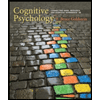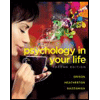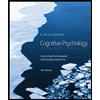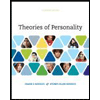
To determine:
The type of sensory abilities on which an individual would rely on most during a typical day.
Introduction
Sensation is defined as the process which occurs due to the activation of sensory receptors like eyes, ears, skin, and nose receptors. These activated receptors then detected the outer stimuli, and transmit it to the brain for perception.
Explanation of Solution
Sensory receptors present in the sense organs are specialized forms of neural receptors. These receptors are activated by different kinds of energy. The types of sensory abilities in which an individual would depend on most of the typical day are: the abilities which influence the vision, auditory and speech perception.
For example, photoreceptors present in eyes are activated by light; mechanoreceptors present in ears are stimulated by vibrations. Similarly, touch receptors are activated by the temperature or pressure, or chemoreceptors present on taste and smell are activated by chemical substances. Each receptor converts or transduces the physical stimuli into electrical, which then cause depolarization or hyperpolarization the cell.
To determine:
Whether certain senses more important than others depending on the social context or setting.
Introduction
The sensation is defined as the process which occurs due to the activation of sensory receptors like eyes, ears, skin, and nose receptors. These activated receptors then detected the outer stimuli, and transmit it to the brain for perception.
Explanation of Solution
Yes, these senses are more important than others that depend on the social context or setting. In some people, these sensory stimuli are processed in an unusual way. For example, Taria Camerino a pastry chef experience music, shapes, colors, and emotions in the form of taste. Similarly, wine steward named Jamie Smith, or James Wannerton, an information technology consultant, both experience colors, shapes, sounds, words as tastes, and texture. This type of condition is known as synesthesia (joined sensation).
Synesthesia which means joined sensation is a type of disorder in which the impulses from sensory organs are processes in wrong cortical areas. Due to this, information coming from the sensory organs is interpreted as more than one sensation. The actual cause of synesthesia is still unknown; however, the signal coming from sensory organs are processed in the wrong area and interpreted more than one sensation.
Want to see more full solutions like this?
Chapter 3 Solutions
EBK PSYCHOLOGY
- Can excessive use of social media has been linked to increased levels of anxiety, depression, and loneliness, particularly among younger users?arrow_forwardHow exposure to diverse cultures and ideas broadens one's perspective of the world, yet it can also result in cultural appropriation or homogeneity?arrow_forwardHow to develop a proposal outline with examples on How Social Media Influences Human Behavior.arrow_forward
- While reading this article can you explain strong point , weaknesses point an future study https://doi.org/10.1126/science.1182238arrow_forwardWhat are your thoughts of this article https://doi.org/10.1126/science.1182238arrow_forwardWhile readings this article what does this explain about the people https://doi.org/10.1126/science.1182238arrow_forward
- Make a graph based on this data below : based on group A and Group B Group A (Bilingual): Vocabulary Task Response Times (seconds): [1.1, 1.3, 1.2, 1.0, 1.4, 1.3, 1.2, 1.1, 1.0, 1.2] Sentence Construction Task Response Times (seconds): [2.0, 2.1, 1.9, 1.8, 2.2, 2.1, 1.7, 2.0, 1.8, 1.9] Group B (Monolingual): Vocabulary Task Response Times (seconds): [1.5, 1.6, 1.5, 1.4, 1.7, 1.5, 1.8, 1.6, 1.5, 1.6] Sentence Construction Task Response Times (seconds): [2.5, 2.6, 2.5, 2.7, 2.4, 2.6, 2.7, 2.5, 2.5, 2.6] 2. Outcome of the Experiment The outcome showed that bilingual individuals performed better, with faster response times in both vocabulary retrieval and sentence construction tasks compared to monolingual individuals. 3. Descriptive Statistics Group A (Bilingual): Vocabulary Task: Mean: Mean=10(1.1+1.3+1.2+1.0+1.4+1.3+1.2+1.1+1.0+1.2)=1.21s Standard Deviation (SD): SD≈0.11s Sentence Construction Task: Mean: Mean=10(2.0+2.1+1.9+1.8+2.2+2.1+1.7+2.0+1.8+1.9)=1.99s SD:…arrow_forwardIn this article, can you explain each of the three games ultimatum game, the dictator game, and the party punishment game? Also, how many days did they play the game, and did people know about it? https://doi.org/10.1126/science.1182238arrow_forwardIn this article can you describe the fairness an punishment for market, religion and community https://doi.org/10.1126/science.1182238arrow_forward
- In this article what was the advantage an disadvantage of this article and what was the point of the article. https://doi.org/10.1126/science.1182238arrow_forwardIn this article what was the method and what was the results https://doi.org/10.1126/science.1182238arrow_forwardCan you help me find 10 interested discussion topics on evolutionary psychology &culturearrow_forward
 Ciccarelli: Psychology_5 (5th Edition)PsychologyISBN:9780134477961Author:Saundra K. Ciccarelli, J. Noland WhitePublisher:PEARSON
Ciccarelli: Psychology_5 (5th Edition)PsychologyISBN:9780134477961Author:Saundra K. Ciccarelli, J. Noland WhitePublisher:PEARSON Cognitive PsychologyPsychologyISBN:9781337408271Author:Goldstein, E. Bruce.Publisher:Cengage Learning,
Cognitive PsychologyPsychologyISBN:9781337408271Author:Goldstein, E. Bruce.Publisher:Cengage Learning, Introduction to Psychology: Gateways to Mind and ...PsychologyISBN:9781337565691Author:Dennis Coon, John O. Mitterer, Tanya S. MartiniPublisher:Cengage Learning
Introduction to Psychology: Gateways to Mind and ...PsychologyISBN:9781337565691Author:Dennis Coon, John O. Mitterer, Tanya S. MartiniPublisher:Cengage Learning Psychology in Your Life (Second Edition)PsychologyISBN:9780393265156Author:Sarah Grison, Michael GazzanigaPublisher:W. W. Norton & Company
Psychology in Your Life (Second Edition)PsychologyISBN:9780393265156Author:Sarah Grison, Michael GazzanigaPublisher:W. W. Norton & Company Cognitive Psychology: Connecting Mind, Research a...PsychologyISBN:9781285763880Author:E. Bruce GoldsteinPublisher:Cengage Learning
Cognitive Psychology: Connecting Mind, Research a...PsychologyISBN:9781285763880Author:E. Bruce GoldsteinPublisher:Cengage Learning Theories of Personality (MindTap Course List)PsychologyISBN:9781305652958Author:Duane P. Schultz, Sydney Ellen SchultzPublisher:Cengage Learning
Theories of Personality (MindTap Course List)PsychologyISBN:9781305652958Author:Duane P. Schultz, Sydney Ellen SchultzPublisher:Cengage Learning





